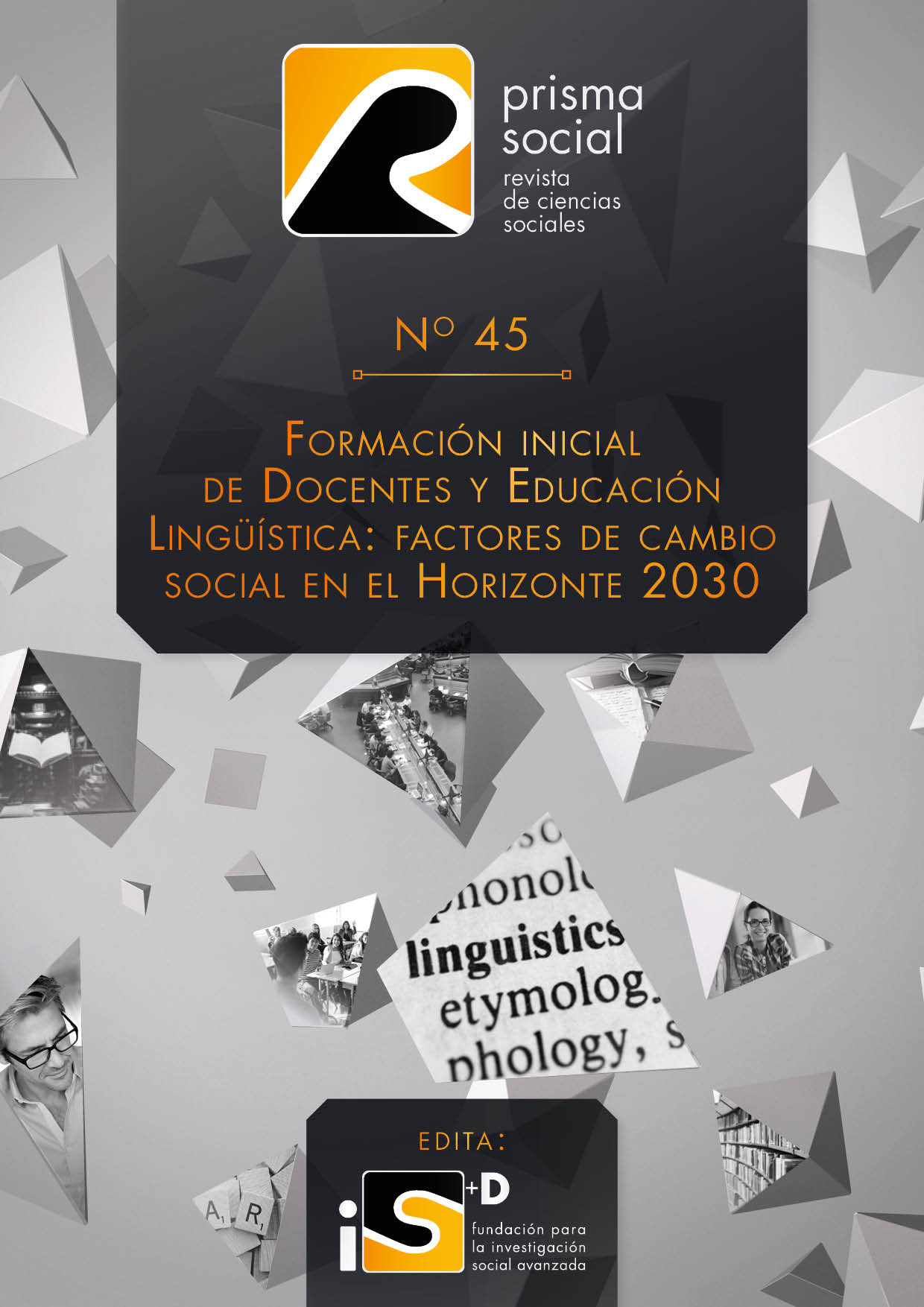Residential preferences in homeless response services
Keywords:
homelessness participation homeless people, homelessness, participation, homeless people, preferencesAbstract
In the last decades, there have been significant changes in the understanding of homelessness. The "new orthodoxy" in the late 20th century led to a reformulation of the concept of homelessness with changes in approaches for addressing the problem, emphasizing unconditional intervention in regular housing. Thirty years later, the limits of the new orthodoxy seem to be marked by a lack of recognition of the individual agency and the potential identification of internally homogeneous subgroups within homelessness. Focusing on the individual agency, this study presents the results of 120 surveys and 5 semi-structured interviews conducted with individuals experiencing homelessness regarding their residential preferences in homeless response services. The study aims to understand the preferences and expectations in residential modalities (shelters, individual housing, and shared housing) used by support services for homeless people, as well as the identification of population characteristics that may influence preferences for one type of resource over another. It is concluded that, although individual housing is the most valued resource, certain personal characteristics and circumstances seem to constrain the choice of shelters and shared housing in some cases. This opens the possibility for specialized responses to homelessness tailored to internally homogeneous groups.
Downloads
References
gulles, J.M. (2018) Las personas sin hogar y la exclusión residencial ¿hacia un nuevo cambio de paradigma? Cuadernos de Trabajo Social, 32, nº 2. 265-275. https://dx.doi.org/10.5209/cuts.58934
Arnstein, S. (1969) A ladder of citizen participation. Journal of the American Institute of Planners, 35, 216–224. https://doi.org/10.1080/01944366908977225
Asociación Médica Mundial (2013). Declaración de Helsinki. Principios éticos para las investigaciones médicas en seres humanos. Asociación Médica Mundial, 59.
BAG, Bundesarbeitsgemeinschaft Wohnungslosenhilfe (2000) Statistikbericht der BAG Wohnungslosenhilfe 1997–1998, Bielefeld, BAG W.
Baptista, I. y Marlier, E. (2019) Fighting homelessness and housing exclusion in Europe. A Study of National Policies, European Social Policy Network (ESPN), 93.
Biederman, D. y Nichols. T. (2014) Homeless Women's Experiences of Service Provider Encounters. Journal of Community Health Nursing 31:1, pages 34-48. DOI: 10.1080/07370016.2014.868733
Botija, M., Vázquez-Cañete, A. I., & Esteban-Romaní, L. (2024). Sinhogarismo como determinante de la salud y su impacto en la calidad de vida. Gaceta Sanitaria, 38, https://doi.org/10.1016/j.gaceta.2024.102388
Bretherton, J. (2020) Women’s Experiences of Homelessness: A Longitudinal Study. Social Policy & Society, 19:2, 255–270. DOI:10.1017/S1474746419000423
Busch-Geertsema, V. (2002) When homeless people are allowed to decide by themselves. Rehousing homeless people in Germany. European Journal of Social Work, 5(1), 5-19. DOI:10.1080/714052981
Busch-Geertsema, V. y Sahlin, I. (2007) The role of hostels and temporary accommodation. European Journal of Homelessness, 1(1).
Busch-Geertsema, V. (2013) Housing First Europe. Final Report. European Union Programme for Employment and Social Security
Carr, S. (2004) Has service user participation made a difference to social care services? Social Care Institute for Excellence. https://lx.iriss.org.uk/sites/default/files/resources/pp03.pdf
Darab, S., Hartman Y. y Holdsworth, L. (2018) What women want: single older women and their housing preferences, Housing Studies, 33:4, 525-543. DOI:10.1080/02673037.2017.1359501
Evers, J. y Ruhstrat, E. U. (1994) Wohnungsnotfa¨lle in Schleswig-Holstein. Im Spannungsfeld zwischen Sozial-, Ordnungs- und Wohnungpolitik (ed. by Ministerin für Arbeit, Soziales, Jugend und Gesundheit des Landes Schleswig-Holstein), Kiel.
FEANTSA (2006) Homeless in Europe. Participation of service users: giving a voice to the experts. https://www.feantsa.org/en/newsletter/2006/10/28/autumn-2006-homeless-in-europe-magazine-participation-of-service-users-giving-a-voice-to-the-experts?bcParent=27
FEANTSA (2007) Participation toolkit. Redistributing the power! https://www.feantsa.org/download/en-final_toolkit-13594157019632072812.pdf
FEANTSA (2009) Empowering ways of working. Empowerment of people using homeless services in Europe. https://www.feantsa.org/download/091019_document_empowering_ways_en-15601437082829885824.pdf
FEANTSA (2013) Participation toolkit. https://www.feantsa.org/download/participation_toolkit_english_final_2013-2-17759063145615739680.pdf
Fernández, G. (2016) El acceso a la vivienda social de las personas sin hogar. Estudio de casos: Alemania, España, Finlandia y Reino Unido. Universidad Autónoma de Barcelona. http://hdl.handle.net/10803/368566
Fitzpatrick, S. (1997) Pathways to independence: the experience of young homeless people. PhD thesis, University of Glasgow. https://theses.gla.ac.uk/1322/
Fitzpatrick, S. (2005) Explaining homelessness: a critical realist perspective. Housing, theory and society, 22(1), 1-17. https://doi.org/10.1080/14036090510034563
Fitzpatrick, S., Kemp, P. y Klinker, S. (2000). Single homeless. An overview of Research in Britain. The Policy Press. https://www.jrf.org.uk/file/36345/download?token=CXGGftjU&filetype=full-report
Fitzpatrick, S., Bramley, G. y Johnsen, S. (2013) Pathways into multiple exclusion homelessness in seven UK cities. Urban Studies, 50(1), 148-168. https://doi.org/10.1177/0042098012452329
Fowler, P.J., Hovmand, P.S., Marcal, K.E. y Das, S. (2019) Solving Homelessness from a Complex Systems Perspective: Insights for Prevention Responses Annual Review of Public Health 40:1, 465-486
Galán-Sanantonio, A., Botija, M., & Gallén-Granell, E. (2024). Particularidades de género en los factores de riesgo y trayectorias de sinhogarismo: Un estudio transversal, descriptivo y exploratorio en Valencia, España. Prisma Social, 44, 84-104. https://revistaprismasocial.es/article/view/5296
Goering, P., Paduchak, D. y Durbin, J. (1990a) Housing homeless women: a consumer preference study. Hospital & community psychiatry, 41(7), 790–794. https://doi.org/10.1176/ps.41.7.790
Goering, P., Durbin, J., Trainor, J. y Paduchak, D. (1990b) Developing housing for the homeless. Psychosocial Rehabilitation Journal, 13(4), 33–42.
Goldfinger, S.M. y Schutt, R. K. (1996) Comparison of clinicians' housing recommendations and preferences of homeless mentally ill persons. Psychiatric Services. 47:4, 413-415.
Gory, M. L., Ritchey, F., y Fitzpatrick, K. (1991) Homelessness and affiliation. The sociological quarterly, 32(2), 201-218. https://www.jstor.org/stable/4120957
Gowan, T. (2010) Hobos, hustlers, and backsliders: homeless in San Francisco. University of Minnesota Press.
Henwood, B.; Redline, B. y Rice, E. (2018) What do homeless transition-age youth want from housing interventions? Children and Youth Services Review, 89, 1-5,
Instituto Nacional de Estadística (2022) Metodología de Encuesta sobre las personas sin hogar. https://www.ine.es/daco/daco42/epsh/epshper_22.pdf
Johnsen, S., Cloke, P. y May, J. (2005) Day centres for homeless people: Spaces of care or fear?. Social & Cultural Geography, 6:6. https://doi.org/10.1080/14649360500353004
Johnsen, S. y Teixeira, L. (2012) Doing it already?: stakeholder perceptions of Housing First in the UK. International Journal of Housing Policy, vol. 12:2, 183-203. https://doi.org/10.1080/14616718.2012.681579
McNaughton-Nicholls, C.M. (2009) Agency, Transgression and the Causation of Homelessness: A Contextualised Rational Action Analysis. European Journal of Housing Policy 9(1) pp.69-84. https://doi.org/10.1080/14616710802693607
Ministerio de Sanidad, Servicios Sociales e Igualdad (2016). Estrategia nacional integral para personas sin hogar 2015-2020. Informes, estudios e investigación 2016. https://www.mscbs.gob.es/ssi/familiasInfancia/ServiciosSociales/docs/EstrategiaPSH20152020.pdf
Ministerio de Derechos Sociales y Agenda 2030 (2023) Estrategia Nacional para la lucha contra el sinhogarismo en España 2023-2030. https://www.mdsocialesa2030.gob.es/derechos-sociales/servicios-sociales/Personas-sin-hogar/docs/EstrategiaPSH20232030.pdf
Muñoz, M., Panadero, S., Santos, E. P., y Quiroga, M. Á. (2005) Role of Stressful Life Events in Homelessness: An Intragroup Analysis. American Journal of Community Psychology, 35, 35–47. https://doi.org/10.1007/s10464-005-1888-6
Nooe, R. M. y Patterson, D. A. (2010). The Ecology of Homelessness. Journal of Human Behavior in the Social Environment, 20(2), 105–152. https://doi.org/10.1080/10911350903269757
Padgett, D. K., Stanhope, V., Henwood, B. F., & Stefancic, A. (2011) Substance use outcomes among homeless clients with serious mental illness: comparing housing first with treatment first programs. Community mental health journal, 47, 227-232. doi: 10.1007/s10597-009-9283-7
Pirla, A., Figueras, A. y Haro, L. (2016) La intervención con personas sin hogar desde el trabajo social. Acompañar más de subsistir. Revista de Treball Social, 209, 26-51. https://cendocps.carm.es/documentacion/2016_N%c2%ba209_RTS.pdf#page=26
Pleace, N. y Bretherton, J. (2013) The Case for Housing First in the European Union: A Critical Evaluation of Concerns about Effectiveness. European Journal of Homelessness. 7. 21-41.
Pleace, N. (2016a) Researching homelessness in Europe: Theoretical perspectives. European Journal of Homelessness, 19-44.
Pleace, N. (2016b) Housing First Guide. FEANTSA
Puchol, G., Rodilla, J. M., Fernández-Baldor, A. y Lovatón, R. (2023) Overcoming homelessness: A capability approach analysis of the LongHome M&E tool for homeless assistance programs. Presentado en la sesión de posters de la conferencia Human Development and Capability Approach 2023.
Regalado, J., Torbay, A. y Rodriguez, G. (2021) El hogar: un metafactor para la promoción de la resiliencia en el sinhogarismo. Cuadernos de trabajo social 34(2), 393-405.
Richter, D. y Hoffmann, H. (2017) Preference for Independent Housing of Persons with Mental Disorders: Systematic Review and Meta-analysis. Adm Policy Ment Health 44, 817–823. DOI: 10.1007/s10488-017-0791-4
Rokach, A. (2005) Private lives in public places: Loneliness of the homeless. Soc Indic Res 72, 99-114. DOI:10.1007/s11205-004-4590-4
Rondino, N. y Rodilla, J. M. (2022) Longitudinal Study of the Homeless Population in Valencia. European Journal of Homelessness, Volume, 16(1).
Rosengard, C., Chambers, D. B., Tulsky, J. P., Long, H. L. y Chesney, M. (2001). Value on health, health concerns and practices of women who are homeless. Women & Health, 34:2, 29-44.
Sahlin, I. (2005) The Staircase of Transition: Survival Through Failure. The European Journal of Social Science Research, 18:2, 115-136. https://doi.org/10.1080/13511610500096400
Schutt, R., Winstein, B. y Penk, W. (2005) Housing Preferences of Homeless Veterans With Dual Diagnoses. Psychiatric Services, 56:3, 241-371. DOI: 10.1176/appi.ps.56.3.350
Shelter Scotland (1994) Leaving Home: Young People's Housing Expectations Survey. Shelter (Scotland).
Schutt R.K., Goldfinger, S.M. (1996) Housing preferences and perceptions of health and functioning among homeless mentally ill persons. Psychiatric Services 47:4, 381-386. DOI: 10.1176/ps.47.4.381
Schutt, R.K. y Goldfinger, S.M. (2000) The contingent rationality of housing preferences: Homeless mentally ill persons' housing choices before and after housing experience. Research in Community and Mental Health, 11, 131-156. DOI:10.1016/S0192-0812(00)80007-0
Schön, U. (2015) User involvement in social work and education – a matter of participation? Journal of Evidence-Informed Social Work, 13:1, 21-33, DOI: 10.1080/15433714.2014.939382
Somerville, P. (1992) Homelessness and the Meaning of Home: Rooflessness or Rootlessness?. International Journal of Urban and Regional Research, 16:4, 529–539. DOI:10.1111/j.1468-2427.1992.tb00194.x
Somerville, P. (2013) Understanding Homelessness. Housing, Theory and Society, 30:4, 384-415. https://doi.org/10.1080/14036096.2012.756096
Tanzman, B. (1993) An overview of surveys of mental health consumers' preferences for housing and support services. Psychiatric Services, 44:5, 450-455. DOI: 10.1176/ps.44.5.450
Tsai, J., Bond, G.R., Salyers, M.P. Godfrey, J. L. y Davis, K. E. (2010) Housing Preferences and Choices Among Adults with Mental Illness and Substance Use Disorders: A Qualitative Study. Community Ment Health J 46, 381–388. DOI: 10.1007/s10597-009-9268-6
Vicepresidencia y Conselleria de Igualdad y Políticas Inclusivas (2022) Resolución [2022/10460] del 4 de noviembre de 2022, de la Vicepresidencia y Conselleria de Igualdad y Políticas Inclusivas, por la que se resuelve el procedimiento de selección de solicitudes de entidades de iniciativa social para acogerse al régimen de acuerdos de acción concertada en materia de servicios sociales en el sector de atención a personas en situación o riesgo de exclusión social pertenecientes a colectivos vulnerables para 2022-2026. Generalitat Valenciana. https://inclusio.gva.es/documents/172864657/174436205/DOGV_resolucion+de+4+noviembre_INCLUSION.pdf/af082870-12a2-5581-184c-30939e04f347?t=1668087025816
Yeich, S., Mowbray, C. T., Bybee, D. y Cohen, E. (1994) The case for a "supported housing" approach: A study of consumer housing and support preferences. Psychosocial Rehabilitation Journal, 18(2), 75–86. https://doi.org/10.1037/h0095514
Downloads
Published
How to Cite
Issue
Section
License
Copyright (c) 2024 Revista Prisma Social

This work is licensed under a Creative Commons Attribution-NonCommercial-NoDerivatives 4.0 International License.
Those authors who publish in this journal accept the following terms:
-
Authors retain copyright.
-
Authors transfer to the journal the right of first publication. The journal also owns the publishing rights.
-
All published contents are governed by an Attribution-NoDerivatives 4.0 International License.
Access the informative version and legal text of the license. By virtue of this, third parties are allowed to use what is published as long as they mention the authorship of the work and the first publication in this journal. If you transform the material, you may not distribute the modified work. -
Authors may make other independent and additional contractual arrangements for non-exclusive distribution of the version of the article published in this journal (e.g., inclusion in an institutional repository or publication in a book) as long as they clearly indicate that the work was first published in this journal.
- Authors are allowed and recommended to publish their work on the Internet (for example on institutional and personal websites), following the publication of, and referencing the journal, as this could lead to constructive exchanges and a more extensive and quick circulation of published works (see The Effect of Open Access).


















